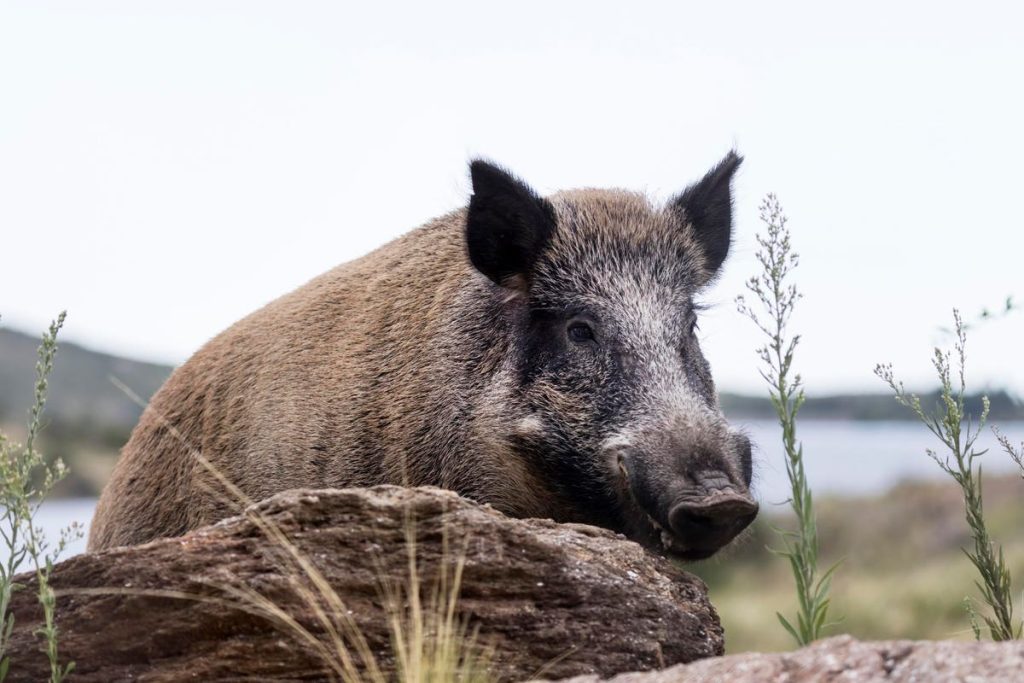Wild pigs (including wild boar and feral domestic pigs) are invading protected natural areas across Argentina, Brazil, Bolivia, Chile, Uruguay and Paraguay.
Due to their ability to out-compete native species for food, change landscapes and carry disease, wild pigs now threaten hundreds of species in 54 different countries across the globe and a 2021 study found 14 species have been driven to extinction as a direct result of impacts from wild pigs.
This is part of a global trend: a recent Intergovernmental Science-Policy Platform on Biodiversity and Ecosystem Services report found invasive species played a key role in 60% of global plant and animal extinctions.
Argentinian biologist Sebastián A. Ballari, a researcher at CENAC, a research center in the Nahuel Huapi National Park in Patagonia says his current work is to investigate the multiple impacts that wild boar and other introduced ungulates (e.g., red deer Cervus elaphus, cattle Bos taurus) have on native ecosystems in Patagonia, particularly in Nahuel Huapi National Park.
In a recent paper published in the Journal for Nature Conservation, of which Ballari was a co-author, researchers found that the number of protected areas with known wild pig presence was led by Uruguay (100%), followed by Chile (20.3%), Argentina (15.8%), Paraguay (9.5%), Bolivia (6.5%), and Brazil (4.7%).
“Our work represents the first assessment of wild pig potential distribution in South America and highlights the potentially devastating impacts of wild pigs on the regional biodiversity and national conservation targets, especially at mega-diverse areas,” Ballari says, adding that the researchers are assessing ecological and economic impacts, taking into account the perceptions of residents and producers of these species, in order to develop more effective management and control recommendations.
“This is important for the conservation of ecosystems and their biodiversity, but also as a contribution to sustainable and responsible management of resources by residents and producers,” he says.
Call Of The Wild
Ballari grew up in Buenos Aires, the capital of Argentina, but always had a passion for wild spaces.
“Since I was a little kid, I loved nature and wildlife and when I graduated from high school, I was sure I would study something related to animals and their environment, and that’s how I got into biology,” he says, “I have kept that focus and enthusiasm to this day, and that is how I am able to live and enjoy my work as a wildlife researcher and ecologist today.”
After high school, he left the city moved to Patagonia, going on to graduate with a Bachelor’s degree in Biological Sciences from the National University of Comahue in Bariloche, Argentina before earning a Master’s degree in Wildlife Management and a Ph.D. in Biology at the National University of Córdoba.
“After completing my PhD, I returned to Bariloche where I did my postdoctoral and got a full-time position as a research scientist at CONICET,” he says, “The inclusion and active participation of scientists from the Global South in research and scientific decision-making at a global level probably are essential to effectively address, with a broad, inclusive, diverse and integrative vision, the challenging problems facing our world today.”
Crayfish Invasion
Another researcher from Latin America trying to track invasive species is Colombian biologist Ada Acevedo-Alonso.
In Colombia, the Louisiana crawfish (Procambarus clarkii) is a species native to the southern United States that was introduced into Colombia in the mid-1980s and is now considered an invasive species.
“They arrived in Colombia with an ICA permit in 1985 in Valle del Cauca for aquaculture purposes (it did not work) and in 1988 escaped to the Palmira River,” she says.
Acevedo-Alonso is now educating communities about an invasive crayfish species while also studying the freshwater creature’s distribution and impacts on the environment.
Read the full article here








